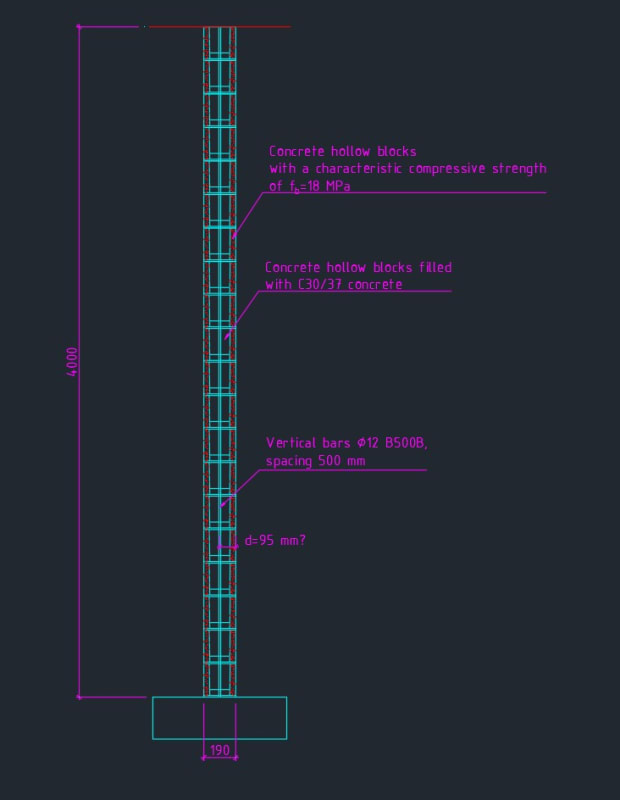nivoo_boss
Structural
Hey everyone!
I'm designing a building that has a lot of masonry walls that are just a bit too slender to go without vertical reinforcement, according to Eurocode 6 at least.
The walls are all only vertically loaded. They are 190 mm thick and filled with conrete. The hollow blocks have characteristic compressive strength of 18 MPa, the concrete that they are filled with is probably C30/37 which has fk=30 MPa.
My questions regarding the calculation. Should I take the compressive strength here as 18 MPa (design strength would then be fd=18/1,5=12 MPa?). I'm planning using vertical reinforcement in the middle of the wall with a spacing of ~400 mm - how to calculate this section? I would probably look at it like concrete section with a width of 1000 mm and two D12 B500B bars as reinforcement. But what about the effective depth? Should this be then d=95?
Below is a little sketch of typical wall, here the slenderness isn't too much, but that's not the point.

I'm designing a building that has a lot of masonry walls that are just a bit too slender to go without vertical reinforcement, according to Eurocode 6 at least.
The walls are all only vertically loaded. They are 190 mm thick and filled with conrete. The hollow blocks have characteristic compressive strength of 18 MPa, the concrete that they are filled with is probably C30/37 which has fk=30 MPa.
My questions regarding the calculation. Should I take the compressive strength here as 18 MPa (design strength would then be fd=18/1,5=12 MPa?). I'm planning using vertical reinforcement in the middle of the wall with a spacing of ~400 mm - how to calculate this section? I would probably look at it like concrete section with a width of 1000 mm and two D12 B500B bars as reinforcement. But what about the effective depth? Should this be then d=95?
Below is a little sketch of typical wall, here the slenderness isn't too much, but that's not the point.

